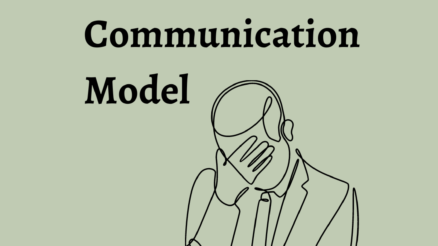Crisis situations can strike any organization at any time, posing significant challenges to their reputation, brand image, and overall business operations.
United Airlines, one of the world’s largest airlines, faced a severe crisis that shook its foundations and tested its ability to handle a rapidly escalating situation.
This blog post will delve into the United Airlines crisis management case study, exploring the events surrounding the crisis, analyzing the company’s initial response, evaluating stakeholder reactions, and examining the strategies employed to manage the situation.
By examining this high-profile case, we can glean valuable insights into the importance of effective crisis management and the lessons that can be learned from United Airlines’ experience.
Lets learn more through the United Airlines crisis management case study
Overview of United Airlines
United Airlines is a major American airline that operates a vast network of domestic and international flights, serving millions of passengers each year. Founded in 1926,
United Airlines has grown to become one of the world’s largest carriers, with its headquarters located in Chicago, Illinois.
The airline is known for its extensive route network, spanning over 350 destinations worldwide, and its membership in the Star Alliance, a global airline alliance that offers seamless travel options to passengers across multiple airlines.
With a diverse fleet of aircraft and a commitment to providing a comfortable and safe travel experience, United Airlines has established itself as a prominent player in the aviation industry.
However, like any large corporation, United Airlines has faced its share of challenges and crises that have tested its ability to navigate difficult situations and maintain its reputation.
The United Airlines crisis management case study provides valuable insights into how the company addressed a high-profile crisis and managed its repercussions in an increasingly interconnected and scrutinizing world.
Background of the Crisis
The crisis that shook United Airlines began on April 09, 2017 when a video capturing a violent altercation between a passenger and United Airlines staff went viral on social media platforms.
The incident occurred on a United Airlines flight where a 69 years old passenger, David Dao, was forcibly removed from the aircraft by security personnel. The video showed a distressing scene, with the passenger being dragged down the aisle, sustaining injuries in the process.
The incident sparked outrage among viewers worldwide, leading to widespread condemnation of United Airlines’ handling of the situation and raising concerns about passenger rights and airline policies.
The incident was captured on video by another passenger named Audra Bridges and shared on Facebook, where it quickly gained widespread attention. In the video, we could see a man with visible injuries and shouting, being dragged down the aisle of the plane. The video went viral, with thousands of shares and millions of views
Initial Response by United Airlines
In the immediate aftermath of the incident, United Airlines issued a series of statements and communications addressing the situation.
The airline expressed regret for the incident and publicly apologized to the passenger involved, as well as to the other passengers who witnessed the event.
United Airlines acknowledged that the incident was a result of a failure to provide the necessary level of customer service and pledged to conduct a thorough review of their policies and procedures.
Strengths and weaknesses of their initial response
United Airlines’ initial response had both strengths and weaknesses. On the positive side, they promptly acknowledged the incident, expressed remorse, and apologized to those affected. Their recognition of a failure in customer service demonstrated accountability and a willingness to take responsibility for the situation. Furthermore, their commitment to conducting a review of policies and procedures indicated a proactive approach to addressing the underlying issues.
However, there were also weaknesses in United Airlines’ initial response. The response was seen by some as lacking in empathy and sincerity, failing to adequately address the distress caused to the passenger and the public.
Additionally, the communication did not provide detailed explanations or immediate corrective actions, leaving room for doubt and skepticism. This lack of transparency and clarity could have contributed to further eroding public trust and confidence.
Impact of their response on public perception
United Airlines’ initial response had a significant impact on public perception. The perceived insensitivity and inadequate addressing of the incident led to widespread outrage and intensified the negative sentiment towards the airline.
The viral nature of the video and the subsequent media coverage amplified the public scrutiny, further damaging United Airlines’ reputation.
The response was seen by many as insufficient to rectify the harm caused and reinforce trust in the company.
Public perception of United Airlines was heavily influenced by their immediate response, and the lack of a robust and empathetic approach contributed to a significant erosion of public trust.
Escalation of the Crisis
The crisis surrounding United Airlines rapidly escalated through extensive media coverage and the power of social media platforms. As the video of the incident went viral, it gained significant traction on various social media platforms, including Twitter, Facebook, and YouTube.
Users shared and commented on the video, expressing their outrage and disappointment with United Airlines’ actions. The incident became a trending topic, attracting attention from news outlets and further amplifying the public’s response.
Media coverage played a crucial role in fueling the escalation of the crisis. News organizations across the globe picked up the story, leading to widespread coverage and analysis. Journalists and commentators discussed the incident in detail, examining the implications for customer service, passenger rights, and corporate responsibility.
Factors that contributed to the escalation
Several factors contributed to the escalation of the crisis:
- Viral nature of the video: The video capturing the violent altercation between the passenger and United Airlines staff quickly went viral due to its shocking and disturbing content. The power of visual storytelling on social media platforms played a significant role in rapidly disseminating the video and capturing widespread attention.
- Public sentiment and outrage: The incident struck a chord with the public, evoking strong emotions and a sense of injustice. The forceful removal of a passenger from an overbooked flight triggered a broader discussion about customer rights, treatment of passengers, and corporate ethics, leading to heightened public scrutiny and outrage.
- Social media amplification: Social media platforms served as a catalyst for the rapid spread of information and opinions. Users shared the video, expressed their reactions, and engaged in conversations about the incident. The ability of social media to reach a vast audience quickly and facilitate real-time discussions amplified the crisis and its impact.
- News media coverage: The extensive coverage by news outlets, both traditional and digital, further propelled the crisis. Journalists investigated the incident, interviewed stakeholders, and provided analysis, keeping the story in the public eye and prolonging its impact.
- Past incidents and public perceptions: The incident occurred in the context of other high-profile incidents involving airlines and passenger mistreatment. Previous incidents had already heightened public sensitivity to issues of customer service and treatment, creating a backdrop that contributed to the intensified reaction to United Airlines’ crisis.
Stakeholder Reactions
Passengers: Many passengers expressed shock, concern, and outrage over the incident. Some shared their own negative experiences with United Airlines or similar incidents, further fueling the negative sentiment. Passengers demanded accountability, transparency, and improved customer service from the airline.
Employees: United Airlines employees had mixed reactions to the incident. While some defended the actions taken by the staff, others expressed embarrassment and frustration. The incident strained employee morale and raised questions about training, protocols, and the overall corporate culture within the organization.
Shareholders: Shareholders of United Airlines reacted to the crisis with concern about the potential financial impact. The negative publicity and public backlash had the potential to affect the company’s stock value and financial performance. Shareholders expressed the need for effective crisis management and measures to restore public trust.
United Airlines’ Crisis Management Strategies
Following are the key crisis management strategies employed by United Airlines to address the situation:
- Apology and acceptance of responsibility: United Airlines promptly issued apologies and accepted responsibility for the incident. They acknowledged their failure in providing satisfactory customer service and expressed remorse for the distress caused.
- Internal investigation and policy review: The airline committed to conducting a thorough review of their policies and procedures, aiming to identify areas for improvement and prevent similar incidents in the future. This demonstrated a proactive approach to addressing the underlying issues.
- Enhanced customer service training: United Airlines announced plans to enhance customer service training for employees, focusing on conflict resolution, passenger communication, and de-escalation techniques. This strategy aimed to improve the overall customer experience and minimize the likelihood of similar incidents.
- Engaging with stakeholders: United Airlines actively engaged with stakeholders, including passengers, employees, and shareholders, to address concerns, provide updates, and gather feedback. This approach sought to rebuild trust, foster transparency, and demonstrate a commitment to listening and learning from the crisis.
Crisis communication and actions taken by the company
One example of successful crisis communication by United Airlines was the issuance of a public statement that outlined the steps they were taking to address the incident and prevent future occurrences. This statement demonstrated transparency and a commitment to change, providing reassurance to stakeholders.
Another example was the proactive engagement with passengers and employees through various communication channels. United Airlines established a dialogue with affected passengers, offering direct apologies, compensations, and opportunities for feedback. This approach aimed to address individual grievances, rebuild trust, and demonstrate a customer-centric approach.
Furthermore, United Airlines implemented tangible actions to prevent similar incidents. For instance, they revised their policies regarding overbooking and involuntary denial of boarding to ensure fair treatment of passengers and minimize the chances of confrontations. These policy changes were communicated to the public, showcasing a commitment to learning from mistakes and implementing meaningful reforms.
Lessons Learned
The United Airlines crisis management case provides valuable lessons for organizations facing or preparing for crisis situations:
- Prioritize customer service and passenger experience: The incident highlighted the critical importance of prioritizing customer service and passenger experience. Airlines, as service providers, must ensure that their policies and practices align with customer expectations and rights. Investing in employee training, effective communication, and conflict resolution skills can help mitigate potential crises and improve customer satisfaction.
- Swift and empathetic crisis response: The importance of a swift and empathetic crisis response cannot be overstated. Organizations should respond promptly, acknowledging the issue, expressing genuine empathy, and accepting responsibility. Failing to address a crisis promptly can lead to a loss of public trust and exacerbate the negative impact on the organization’s reputation.
- Transparency and clear communication: Transparency and clear communication are crucial during a crisis. Organizations should provide regular updates, accurate information, and honest explanations to stakeholders. Openly sharing actions taken to address the crisis and prevent future occurrences can help rebuild trust and demonstrate a commitment to improvement.
- Proactive policy evaluation and reform: Conducting a thorough evaluation of existing policies and procedures is essential in crisis management. Identifying potential areas of vulnerability and implementing necessary reforms can help prevent similar incidents in the future. Organizations should regularly review their policies, considering feedback from stakeholders and changing industry norms.
- Stakeholder engagement and feedback: Actively engaging with stakeholders, including customers, employees, and shareholders, is vital in crisis management. Listening to concerns, gathering feedback, and involving stakeholders in the decision-making process can help rebuild trust, strengthen relationships, and ensure that actions taken address the needs and expectations of those affected by the crisis.
- Learn from past incidents and industry best practices: Organizations can learn valuable lessons from past incidents and industry best practices. Analyzing similar crises and understanding how other organizations have effectively managed similar situations can inform crisis management strategies. It is essential to continually adapt and improve crisis response plans based on evolving industry standards and emerging trends.
Final Words
In the United Airlines crisis management case study, we examined the background of the crisis, the initial response by the airline, the escalation of the crisis, stakeholder reactions, United Airlines’ crisis management strategies, and the lessons learned from the incident. The case study serves as a reminder of the critical importance of effective crisis management in today’s interconnected and highly scrutinized world.
United Airlines’ experience teaches us that a crisis can escalate rapidly through media coverage and social media, underscoring the need for organizations to be prepared for the speed and reach of information dissemination in the digital age.
Ultimately, the United Airlines crisis management case study serves as a valuable reminder that a crisis can have far-reaching consequences for an organization’s reputation, customer trust, and bottom line. By implementing the lessons learned and adopting a proactive and customer-centric approach, organizations can navigate crises more effectively, safeguard their reputation, and emerge stronger from challenging situations.



